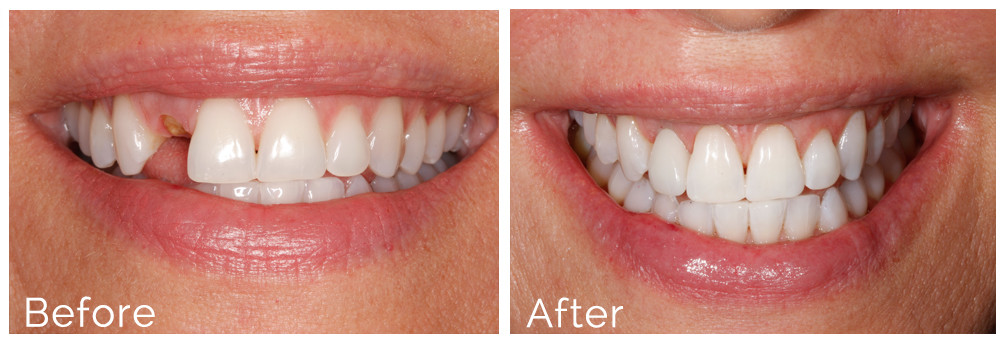The Single Strategy To Use For Dental Sense
Table of ContentsThe Best Guide To Dental SenseThe 20-Second Trick For Dental SenseThe 5-Minute Rule for Dental SenseSome Known Incorrect Statements About Dental Sense
are medical tools operatively dental implanted into the jaw to recover an individual's capability to chew or their appearance. They provide assistance for man-made (fake) teeth, such as crowns, bridges, or dentures. When a tooth is lost due to injury or condition, an individual can experience problems such as rapid bone loss, malfunctioning speech, or modifications to chewing patterns that result in pain.Dental dental implant systems contain an oral implant body and oral implant joint and might likewise consist of a joint fixation screw. Front tooth filling. The oral implant body is operatively placed in the jawbone instead of the tooth's root. The oral implant abutment is normally connected to the dental implant body by the joint addiction screw and prolongs via periodontals right into the mouth to sustain the attached man-made teeth
(https://dental-sense-48874067.hubspotpagebuilder.com/dental-sense/dental-veneers-cost-kids-dental-and-dental-implant-vs-bridge-everything-you-need-to-know)Structure of The Dental Implant System selecting dental implants, speak with your oral copyright concerning the prospective benefits and risks, and whether you are a candidate for the treatment. Things to consider: Your general health and wellness is a crucial aspect in determining whether you are a great prospect for oral implants, just how long it will take to recover, and exactly how long the dental implant might remain in place.
Smoking cigarettes may affect the recovery process and reduce the long-term success of the dental implant. The healing procedure for the implant body might take several months or longer, throughout which time you typically have a temporary joint instead of the tooth. the oral implant procedure: Very carefully comply with the dental hygiene directions given to you by your oral service provider.
Dental Sense Fundamentals Explained
Implant failing can result in the requirement for one more medical procedure to take care of or change the dental implant system. Recovers the ability to eat Restores cosmetic appearance Helps maintain the jawbone from diminishing as a result of bone loss Protects the health and wellness of the bordering bone and gum tissues Helps maintain nearby (neighboring) teeth secure Improves top quality of life Damages to surrounding all-natural teeth throughout implant positioning Injury to the surrounding cells during surgery, such as sinus perforation Injury during surgical procedure (as an example, fracture of bordering jawbone) Poor function, such as seeming like the teeth do not bite with each other generally A sensation that the tooth is loose or turning in location resulting from a joint screw loosening Implant body failure (looseness of the implant body) because of systemic infection, which may be more probable in patients with unrestrained diabetes due to regional infection in bone and periodontals supporting the implant body as a result of postponed recovery, which may be more most likely in patients that smoke Trouble cleaning up the gum tissues around the dental implant, resulting in inadequate oral health Unattended periodontal disease Post-surgical pins and needles because of nerve impingement or damage Always alert wellness treatment suppliers and imaging professionals that you have oral implants prior to any type of magnetic resonance imaging (MRI) or x-ray procedures.
FDA is not familiar with any type of unfavorable events reported for MRI or x-ray treatments with dental implants. Dental implants systems are typically constructed from products that follow international agreement requirements of the International Organization for Standardization (ISO) or ASTM International. These criteria have details of what makes a risk-free material.

An oral implant is a structure that changes a missing out on tooth. With screw-like devices, the cosmetic surgeon inserts an implant right into the jawbone, and it acts as an anchor for a fabricated tooth, called a crown. A device called an abutment links the fabricated tooth to the dental implant. The crown is personalized to fit the individual's mouth and match the shade of their teeth.
Top Guidelines Of Dental Sense
Some people are not eligible for dental implant surgical treatment. It is for dental cosmetic surgeons to operate individuals with: severe illnessuncontrollable metabolic diseasebone or soft tissue illness or infectionIf these concerns are dealt with, a person can have the surgical procedure. In, dental surgeons avoid from operating on individuals with: If people with any of the above undertake oral implant surgical procedure, there is a higher risk of the dental implant failing.

Dental implant surgical procedure is a customized process. It's not the exact same for every person. The adhering to gives a general introduction of what you can anticipate your dental practitioner, oral doctor, periodontist or prosthodontist to do: Position the implant operatively. Provide you time to recover. Connect the article and final crown, bridge or denture.
Next, your cosmetic surgeon will very carefully put the dental implant into your jaw. If your implant is near the front of your mouth, your dentist will certainly make a short-lived tooth for you to wear up until you heal.
Dental Sense Fundamentals Explained
Your provider can tell you what to anticipate in your situation. During the healing stage, your jawbone needs to fuse to the oral implant. This process, called osseointegration, is vital for security and long-term success. This procedure can take anywhere from three to nine months. In some situations, it might take longer.
When your implant heals, your dentist can connect the abutment (little adapter message) and your final reconstruction (crown, bridge or denture). This normally takes regarding one hour to finish and might require a second small surgical procedure. You should not really feel any pain throughout your oral implant you could try here treatment due to the fact that your company will certainly use medication to numb your periodontals.